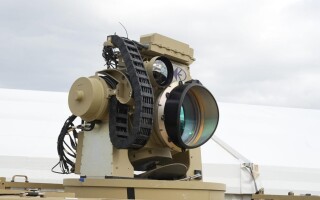ESA, partners investigate space photons' role in secure cryptography
NewsMay 04, 2018

PARIS. The European Space Agency (ESA) has signed an agreement with satellite communications company SES Techcom (Luxembourg) to develop what they call "QUARTZ" [Quantum Cryptography Telecommunication System], a platform for quantum key distribution, and administer it from space.
ESA information shows that classic cryptography, as used in World War II, concealed messages with ciphering codes and encryption keys generated by hand or early machinery; messages were decoded by a person using the corresponding key, code book, or equipment. Modern ciphering codes have evolved into modern mathematical algorithms; cryptography keys -- generated by combining algorithms with random-number generators -- are used everywhere by web browsers, IT networks, ground infrastructure for utilities, and to protect critical satellite systems.
However, say ESA scientists, cutting-edge developments like quantum computers and new codebreaking techniques can leave certain aspects of today’s systems vulnerable to attack, which is why ESA is investigating novel encryption technologies like quantum key distribution (QKD). QKD is a growing research field that applies security properties based on fundamental physics to potential real-world applications, resulting in a system that distributes the key between two entities so that it is impossible to intercept without being detected, which enhances and complements traditional key distribution.
QKD involves sending random numbers between two points through photons, which are then used to generate the key. Any type of interception or eavesdropping on this kind of communication requires the photons to be measured, which permanently changes their quantum properties, thereby alerting the owners that the beam has been intercepted. The use of QKD today is constrained by optical fiber, as it limits the radius that information can be transmitted on the ground to only a few hundred kilometers before signal fade. Studies done by ESA show that photons can be collected and distributed in free space, from satellite to satellite, satellite to ground, and vice versa. The conclusion: A satellite carrying a key can distribute it to customers anywhere on Earth.
The ESA-SES QUARTZ effort, says ESA officials, aims to be a robust, scalable and commercially-viable satellite-based QKD system for use in geographically-dispersed networks.






